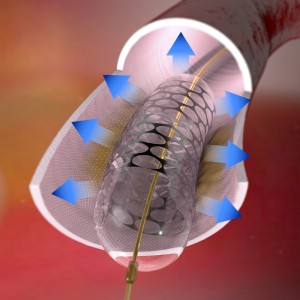 In a new study entitled “Pulmonary Artery Denervation to Treat Pulmonary Arterial Hypertension” authors present the benefits of pulmonary artery (PA) denervation procedure to treat patients with idiopathic PA hypertension (IPAH). The study was published in the Journal of the American College of Cardiology.
In a new study entitled “Pulmonary Artery Denervation to Treat Pulmonary Arterial Hypertension” authors present the benefits of pulmonary artery (PA) denervation procedure to treat patients with idiopathic PA hypertension (IPAH). The study was published in the Journal of the American College of Cardiology.
Idiopathic pulmonary arterial hypertension (IPAH) is characterized by increased blood pressure in lung arteries (mainly in the mean pulmonary artery pressure, PAP) due to their abnormal constriction (denoted by increased pulmonary vascular resistance, PVR). Recently, it was suggested that remodeling in the vascular wall increases PVR.
In this study, the authors determined whether denervation of the pulmonary artery (by introducing a catheter) would address the increase in pulmonary artery pressure (PAP) in patients with IPAH who failed to respond to current pulmonary artery hypertension medications. The technique employed – Pulmonary artery denervation (PADN) — works by reducing sympathetic stimulation of the pulmonary vasculature, i.e., a catheter equipped with radiofrequency or ultrasound properties is introduced in the artery to ablate the nerves in the vessel wall responsible for the blood pressure increase.
While the technique was already successful in treating other hypertension disorders, this is the first time it is applied to pulmonary arterial hypertension.
The authors studied 21 patients (all unresponsive to pulmonary artery hypertension therapy): 13 patients were submitted to pulmonary artery denervation surgery, while 8 patients (who refused the surgery) were considered controls. Patients were diagnosed with idiopathic PAH, but also left heart disease, chronic thromboembolic pulmonary hypertension and connective tissue disease.
[adrotate group=”4″]
As primary endpoints, the team determined patients’ alterations in pulmonary artery pressure (PAP), tricuspid excursion (Tei) index, and a 6-min walk test (6MWT) performance 3 months after the procedure. They found that patients who underwent PADN procedure exhibited a significant decrease in pulmonary artery pressure (PAP), accompanied by a marked increase in their 6MWT and Tei index (the former tests exercise tolerance while the latter assess right ventricular systolic function).
The authors’ highlight their study shows for the first time the impact of PADN procedure in improving IPAH patients’ functional and hemodynamic capacities.
Shao-Liang Chen, MD, of Nanjing First Hospital (Nanjing, China) and study first author noted in a press release, “Further randomized clinical [studies are] required to show the real benefit of pulmonary artery denervation in reducing mortality in patients with idiopathic [PAH], secondary pulmonary arterial hypertension, and also secondary pulmonary hypertension from left heart disease.”

